Embracing leafy greens into your home design can help you achieve the ultimate sense of comfort in your living or work areas.
Although it can take patience and determination to wait for a houseplant to achieve its full potential before creating that Instagram-worthy living space, the simplest approach is to buy fully established houseplants.
One problem is that purchasing established houseplants can be rather expensive. Tired of waiting for your houseplants to grow? Check out these wonderful Fast Growing Indoor Plants that are also beautiful!
Logically, you’d want your plants to develop quickly. But no matter how much you care, if they’re slow-growing, they won’t grow quickly.
So you should look for plants that grow quickly, and you’ve arrived at the perfect location! Here is a list of some of the most visually appealing and rapidly growing indoor plants!
Fastest Growing Indoor Plants
1. Pothos

The pothos (Epipremnum aureum) is a popular houseplant that is much less demanding and requires no special care.
It also aids in the purification of indoor air. What’s more remarkable is that it can live in water.
2. Asparagus Fern
Asparagus grows quickly and furiously, as gardeners who have had the vegetable kind (A. Officinalis) run to foliage can confirm. Although the types grown as houseplants, such as A. aethiopicus and A. densiflorus, are not edible, they, too, are quick to produce fronds.
Allow them to dry out since, like most ferns, they like damp temperatures and high humidity in partial sun or strong shade—which means they’ll thrive near an east-facing bathroom window.

3. Grape Ivy (Cissus alata)
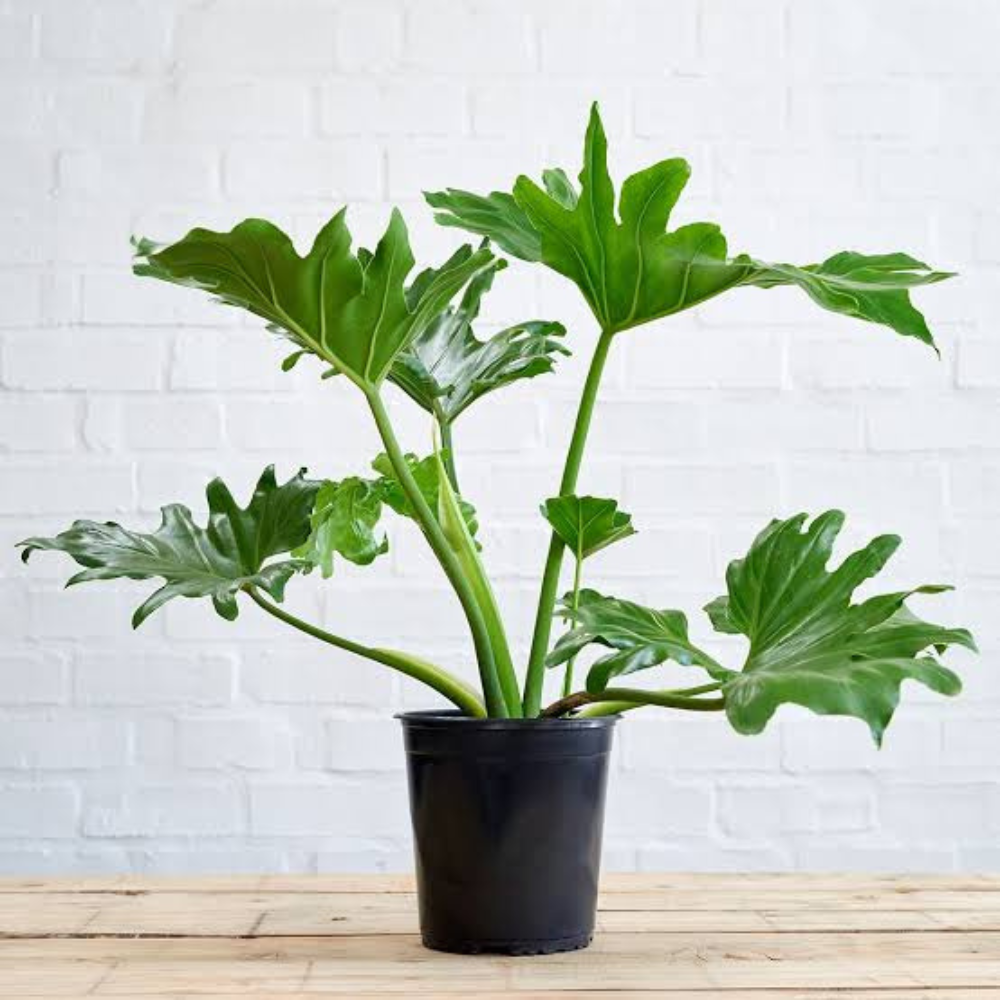
Grape ivy may be grown and tended indoors all year. The vine grows slowly but can live for up to ten years with proper care, making it an excellent choice for long-term plant care.
Cissus is a vast genus of vining plants that grow in a variety of tropical and subtropical temperatures around the world, from very warm jungles to semi-arid areas (where they are classified as deciduous vines).
4. Burn Plant (Aloe vera)
Aloe vera is a medicinal plant valued for its excellent gel, which has therapeutic effects. Thick, meaty stems develop from the middle, with serrated teeth along the margins.
Although aloe vera grows well in indirect light, position it in the brightest spot you can locate for the fastest development. Because it is a succulent, it will not thrive in wet soil!
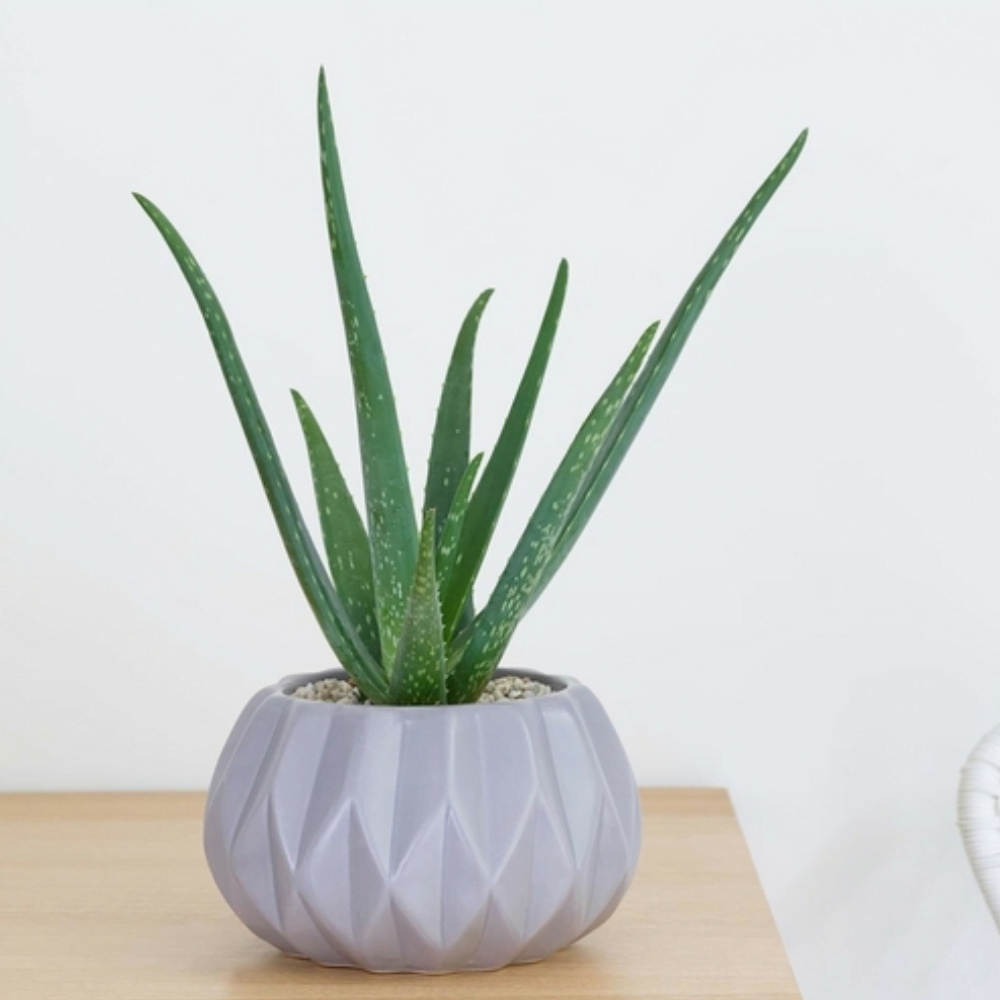
5. Purple Passion Plant (Gynura aurantiaca)
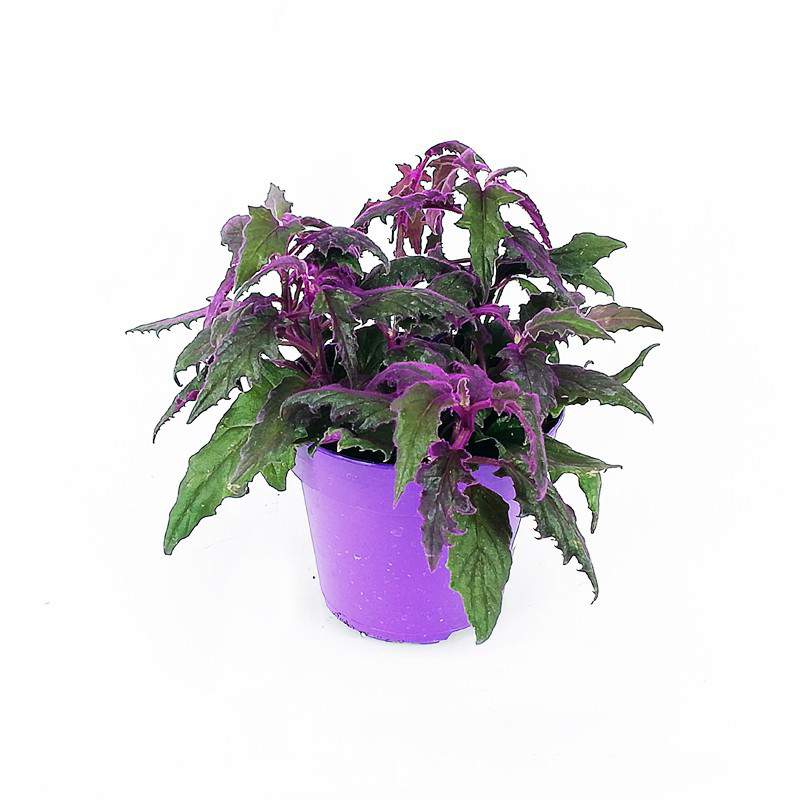
It’s easy to fall in love with a plant that has soft purple leaves with jagged edges. Purple passion loses its distinguishing hue as it ages, although growing quickly in moderate to bright light and medium water.
Fortunately, cuttings can be used to reproduce the plant. Its spidery orange-and-yellow blossoms have been compared to the fragrance of soiled socks, but they do provide a bright contrast to all that royal velvet.
6. Silver Squill (Ledebouria socialis)
This creeper, also known as the leopard plant because of its spotted leaves, spreads swiftly due to the multiplication of the small red bulbs from which it grows. It produces racemes of greenish-white blooms tinged with pink in the spring.
Its bulbs should always be kept at least two-thirds above the soil to avoid rotting. Otherwise, the plant is low-maintenance, surviving in both sun and shade, even with spotty watering!

7. Queen’s Tears (Billbergia nutans)
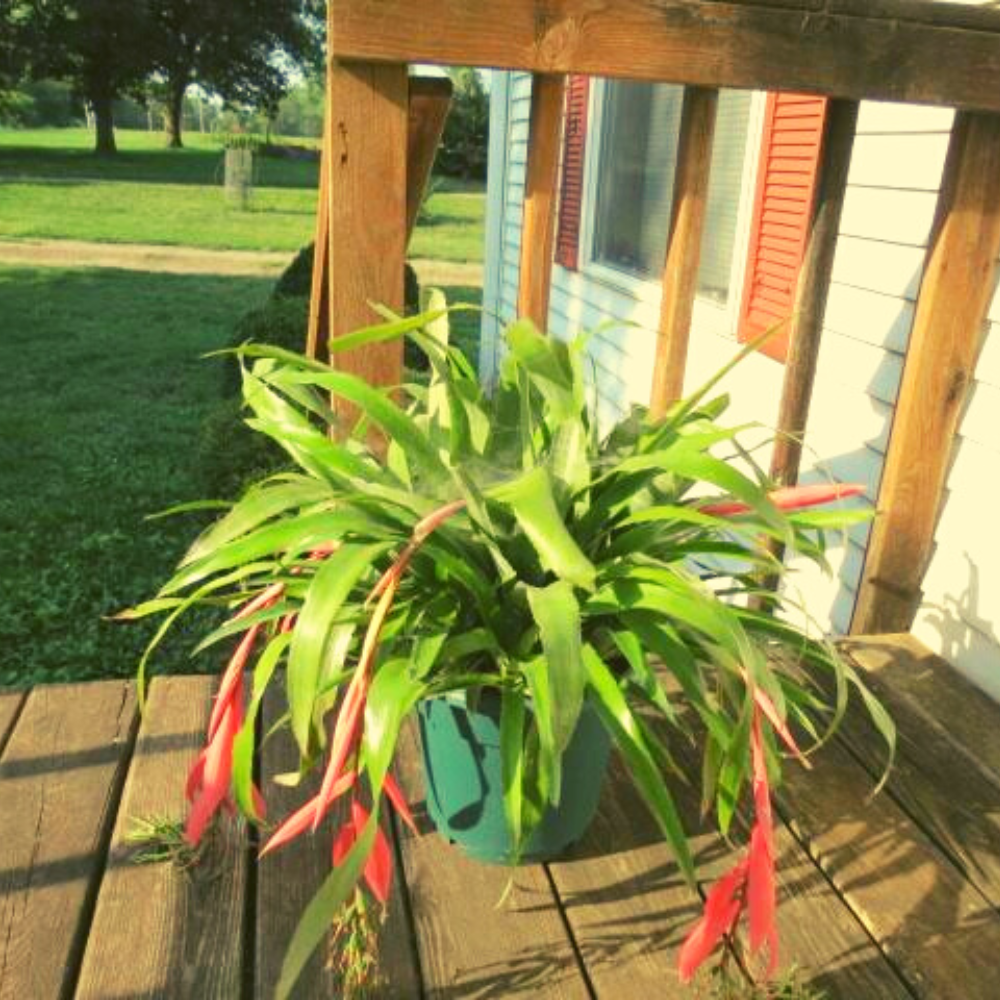
The queen’s tears plant gets its name from the clear nectar that “weeps” from clusters of blue-edged, green-leafed blooms that emerge from pink bracts dangling above a rosette of serrated leaves.
It reproduces so prolifically that it has earned the nickname “friendship plant,” in honor of all the offsets a gardener can bestow on acquaintances.
This simple bromeliad prefers a water-filled cup (center) in partial sun. After blossoming, the original queen dies, leaving the throne to the offspring who have gathered around her.
8. Turtle Vine (Callisia spp.)
Turtle vine, like a wandering sailor, arrives later in this collection and is everything but tortoise-slow. C. repens, the most common species, grows at a hare-like rate, making it invasive outdoors in some areas. It has purple-backed green foliage and little three-petal white blossoms.
That speed, on the other hand, can be beneficial in houseplants, as evidenced by the more colorful cultivars of the species, which can grow in sun or shade with minimal watering to keep them hopping.
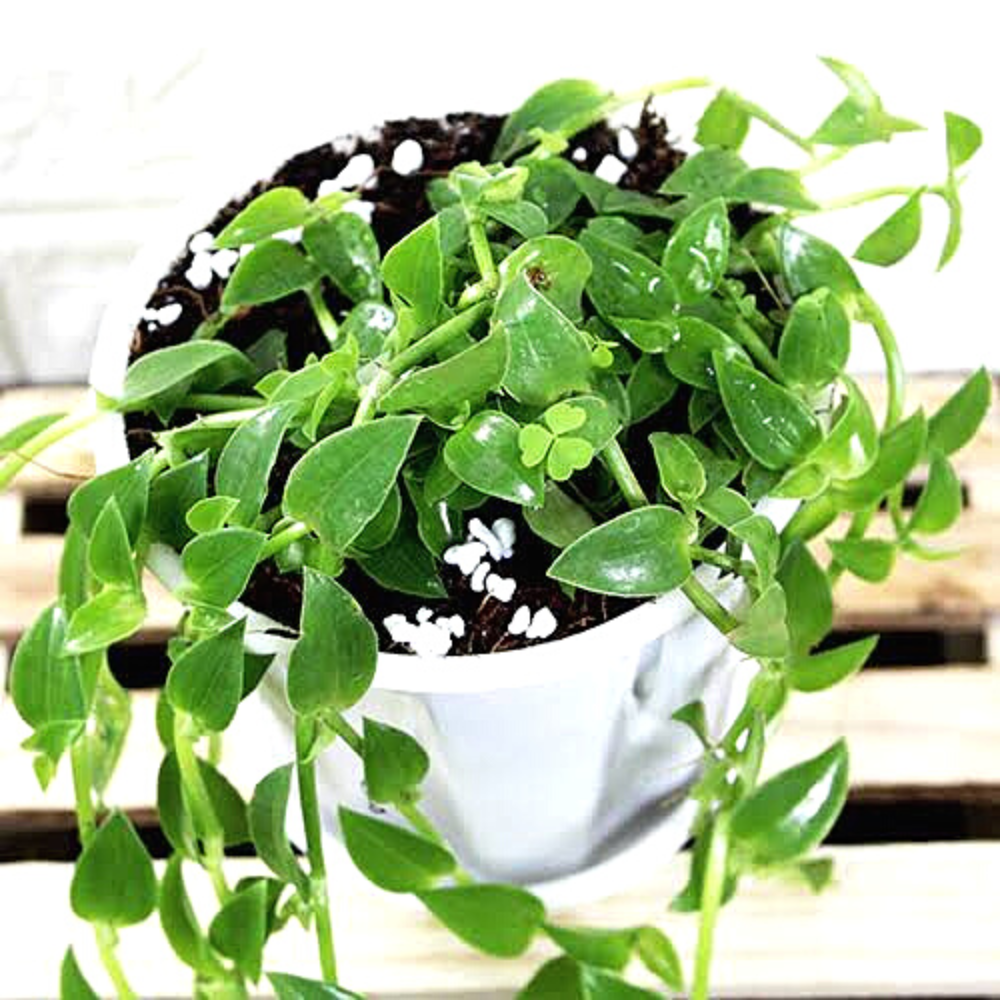
9. Wandering Sailor (Tradescantia zebrina var. zebrina)

This plant, formerly known by a more derogatory common name, has beautiful white and/or purple-streaked green leaves, frequently with purple backs. It roams and roots at the nodes when cultivated in the ground.
It dangles in silver-tipped waves of color in a pot, occasionally speckled with little pink three-petal blossoms. To keep the plant in good shape, place it in bright or indirect light and water it when the surface of the soil is dry.
10. Walking Iris (Neomarica spp.)
A walking iris is a pass-along heirloom that is not widely accessible in nurseries. It appears to racewalk, producing new plantlets on each flower spike that ride that spike down to the soil, where the root is.
If kept dark in the evenings in early winter, the plant will produce fragrant iris-like blooms in late winter or spring that are either white with violet-blue center petals or completely violet-blue. Neomarica will gladly walk the walk if given moderately wet soil in the sun or partial shade.
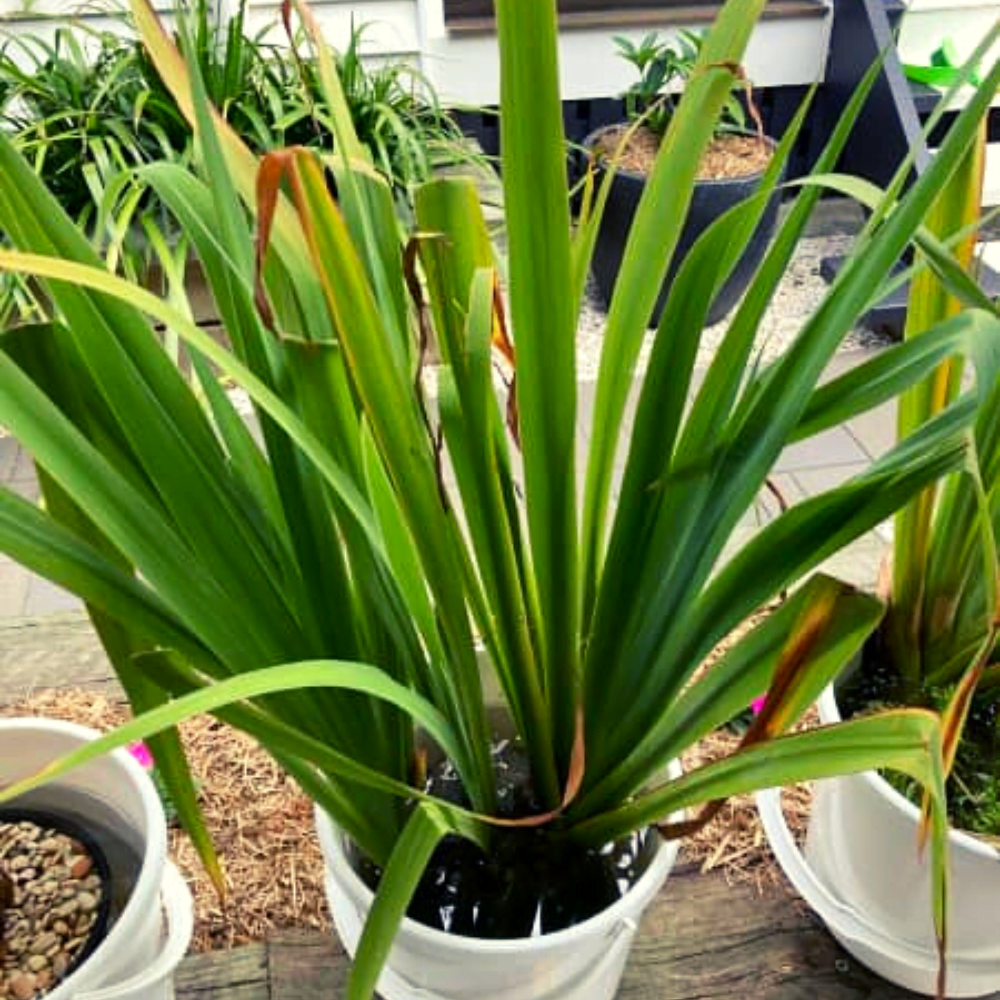
11. Hoya Carnosa
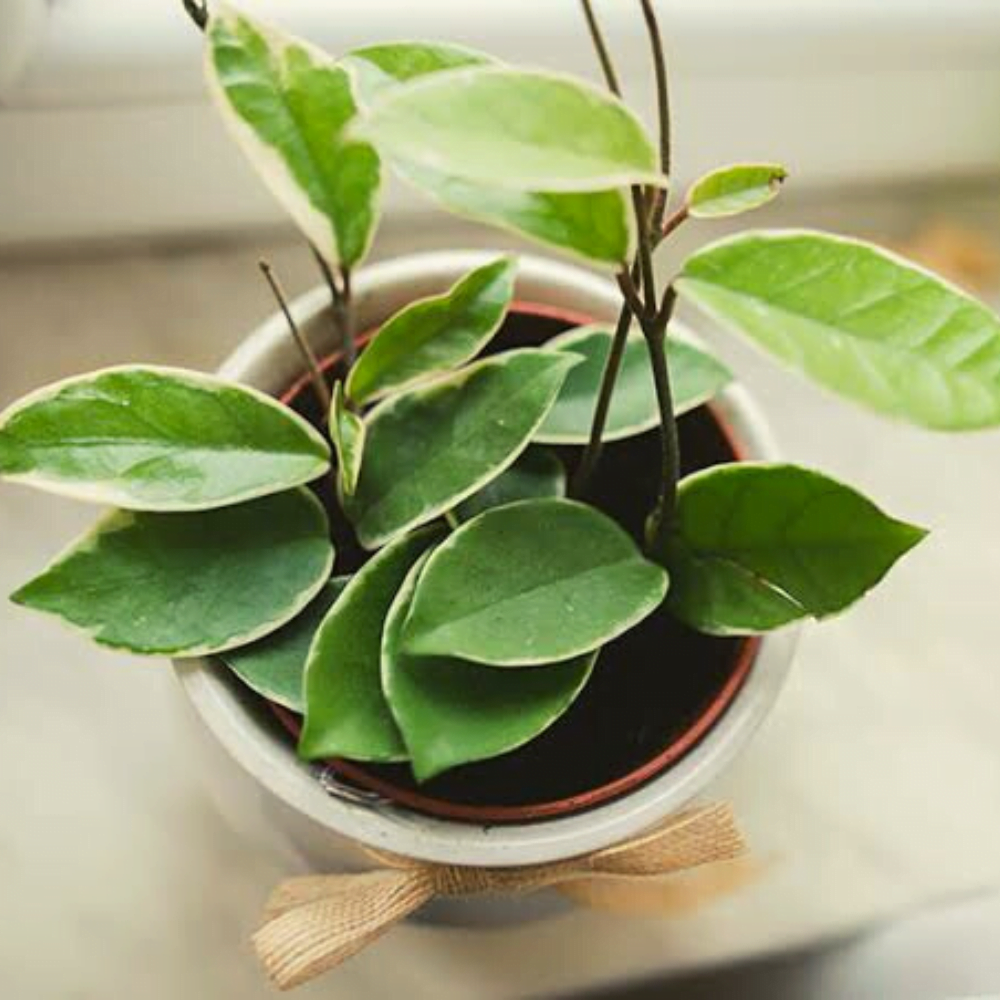
Hoyas are top trendsetters, and they come in so many different shapes, colors, and sizes that they may be used to create a diverse indoor jungle with only plants from this genus! Because of its delicate, delicately fragranced blossoms and thick waxy foliage, it is also known as the Wax Plant or Porcelain Flower.
Hoya Carnosa is one of the most popular Hoya cultivars due to its rapid growth and is widely accessible in garden centers and plant stores.
Your plants will develop a few centimeters every Spring and Summer, and before you realize it, you will have a fully grown plant with umbels of closely packed, fragrant flowers.
12. Kangaroo Fern
The Kangaroo Fern is a distinctive-looking fern native to sunny Australia. Their leaves are shaped like the paws of their most famous hopping mammal, the kangaroo.
Microsorum diversifolium, on the other hand, refers to the various forms the leaves take as they mature, beginning off solid and solitary and then maturing into leaves with deep indentations, providing a beautiful foliage plant.
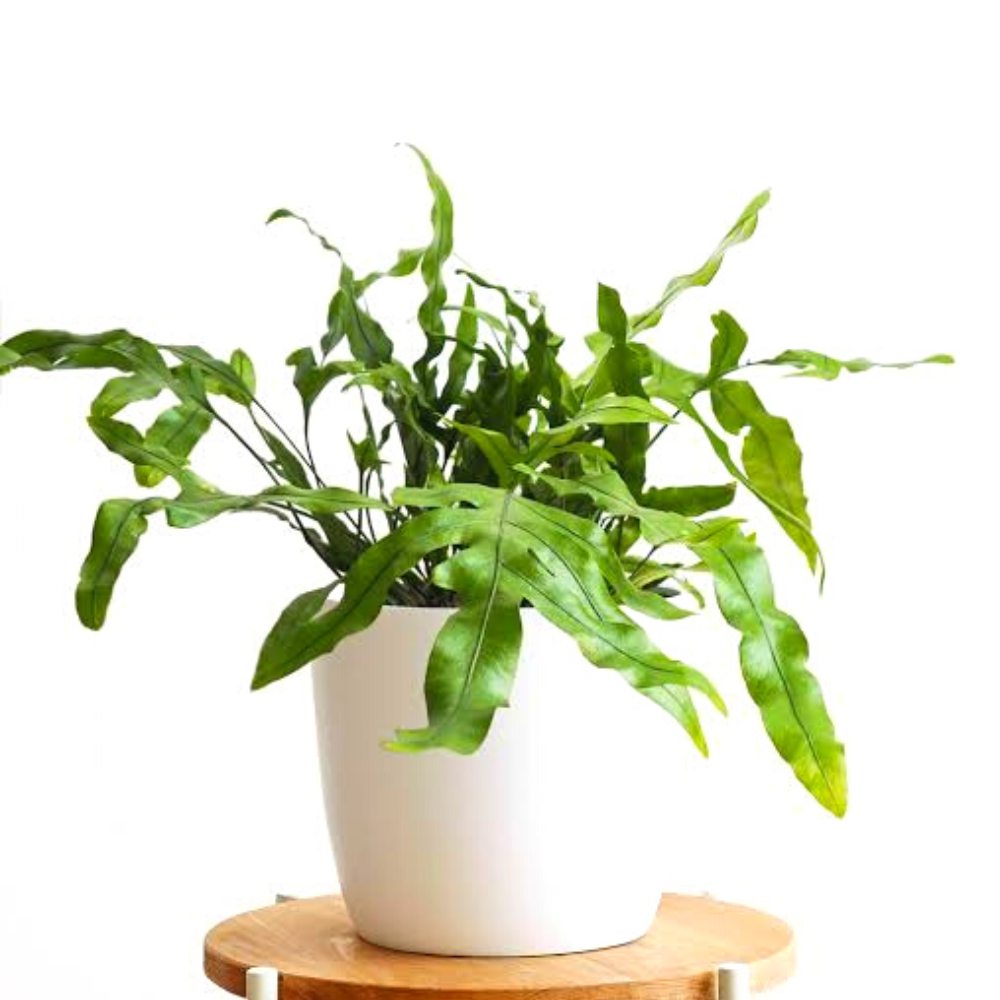
13. Nerve Plant

Nerve Plants are available in a variety of vibrant colors, including greens, reds, and pinks. What makes it stand out is the delicate patterning that resembles nerves running across the leaves, hence the colloquial name, however it can also be known by its scientific name, Fittonia.
They’re also one of those, I’ll tell you what, plants that droop when thirsty. Once watered, it returns as though nothing occurred. That is not their only redeeming feature.
14. Dainty Crassula
Crassula spathulata, also known as the Spatula Crassula or Dainty Crassula, is another of South Africa’s lovely endemics, and when you know that, you know these little gentlemen are most likely to be Waterwise.
They’ve gradually found their way indoors, and not in an invasive fashion, as a fast-growing groundcover in nature with the ability to cover enormous surfaces in no time. They are adaptive and enjoy the brilliant filtered light that the indoor environment may provide.
As a natural groundcover, they can be fashioned in a variety of ways. They look great as a hanging plant in a brilliantly light sunny window.
However, they are also ideal as an underplanting around the base of huge interior trees. When the right conditions are met, they will reward you with charming clusters of white star-shaped flowers.
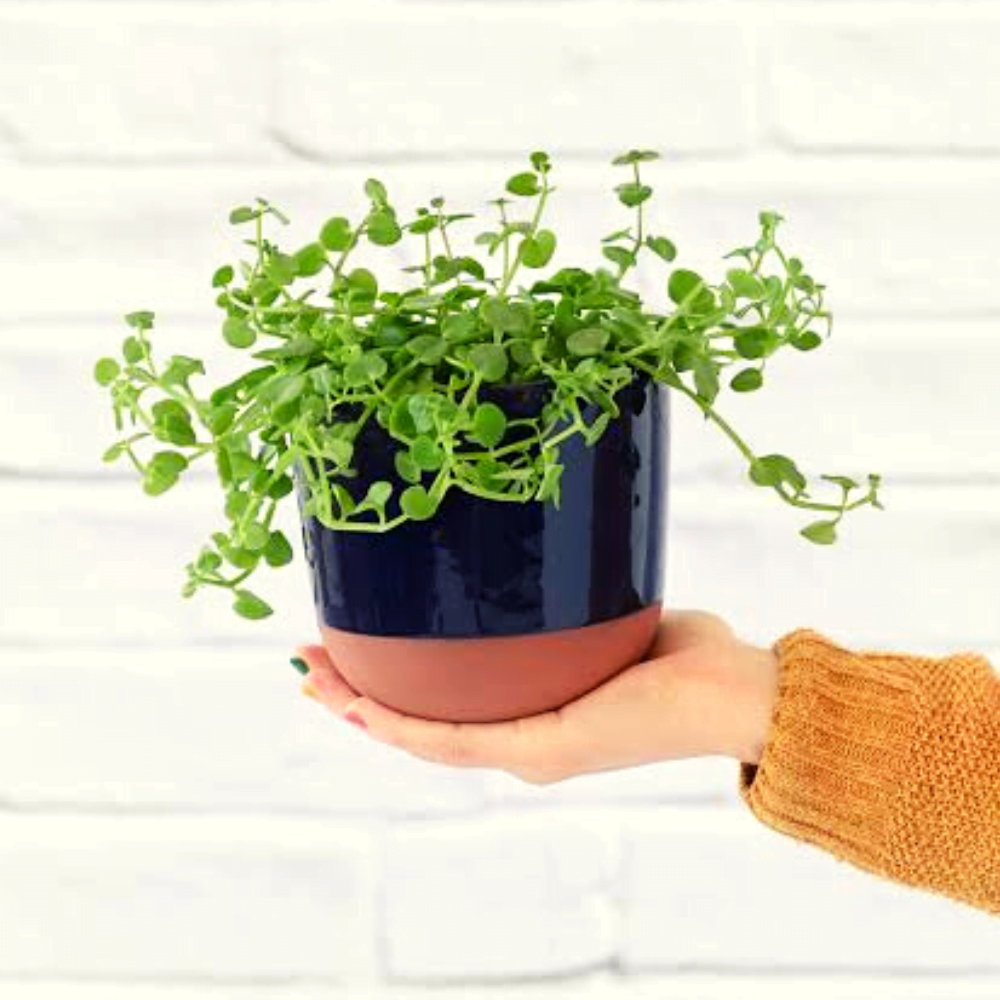
15. Weeping Fig

The Weeping Fig is a lovely and popular indoor tree. So popular that you’ve probably seen one without even realizing it!
When it comes to a fast-growing indoor tree, Ficus Benjamina is at the top of the list. They can grow 30 – 60cm in a month, which is remarkable. With this rapid development, nurseries will frequently plant more than one sapling in a pot and plait their supple stems together, creating a magnificent and distinctive trunk.
These plants are excellent for adding a splash of color to your Jungle collection. It can be used as a standalone feature in your home or office, or as a tall addition to a grouping of houseplants. However, one should not dismiss their foliage as unimportant.
Their tears are caused by the way the leaves dangle daintily from the branches, producing a smooth-flowing effect. Their leaf can also be found in many colors, ranging from variegated varieties like Ficus Starlight to brilliant alternatives like the Lemon and Lime type.
16. Broadleaf Lady Palm
The Broadleaf Lady Palm is a type of Fan Palm found solely in cultivation. They feature a bamboo-like growing stem that is topped with broad fanned leaves. The way this Palm grows gives it a full and luscious appearance that really stands out.
For an indoor Palm, they grow quickly, adding about 30 – 60cm of height per year, yet they will produce a lot of leaves in a shorter period, keeping the Plant appearing full.

17. String of Hearts
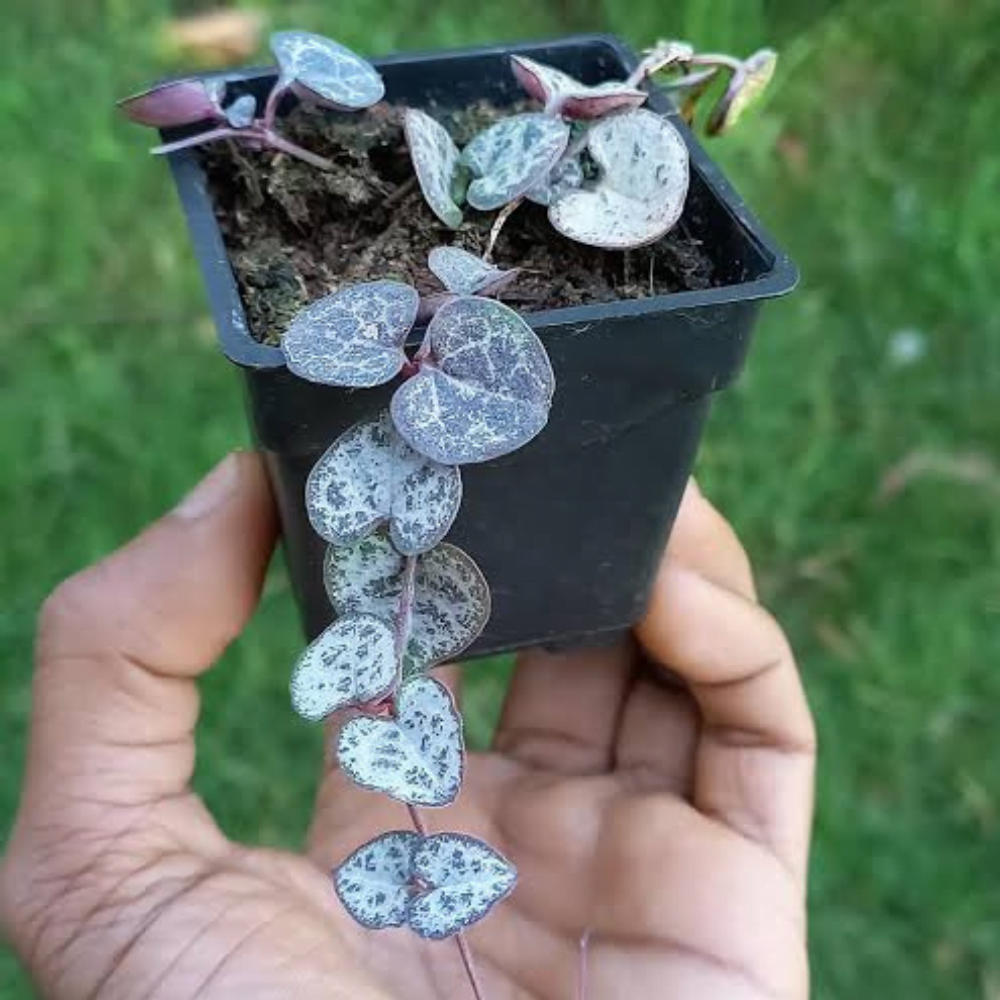
We can’t help but shout the String of Hearts’ praises, with their long thin vines studded with many softly grey-green heart-shaped leaves, though the variegated varieties with pink and white tinges are even better. So adorable!
There is no denying why this houseplant is a near-constant trending houseplant. They are one of the fastest-growing houseplants, adding centimeters of growth in a warm week. They’ll grow so swiftly that you’ll forget you bought them at half or fourth the length a month ago.
18. Pepper Face
This fast-growing plant has a distinctive appearance and can be grown on windowsills.
It also purifies the air and removes formaldehyde from the home. Keep the leaves near an east or west-facing window to keep the color.
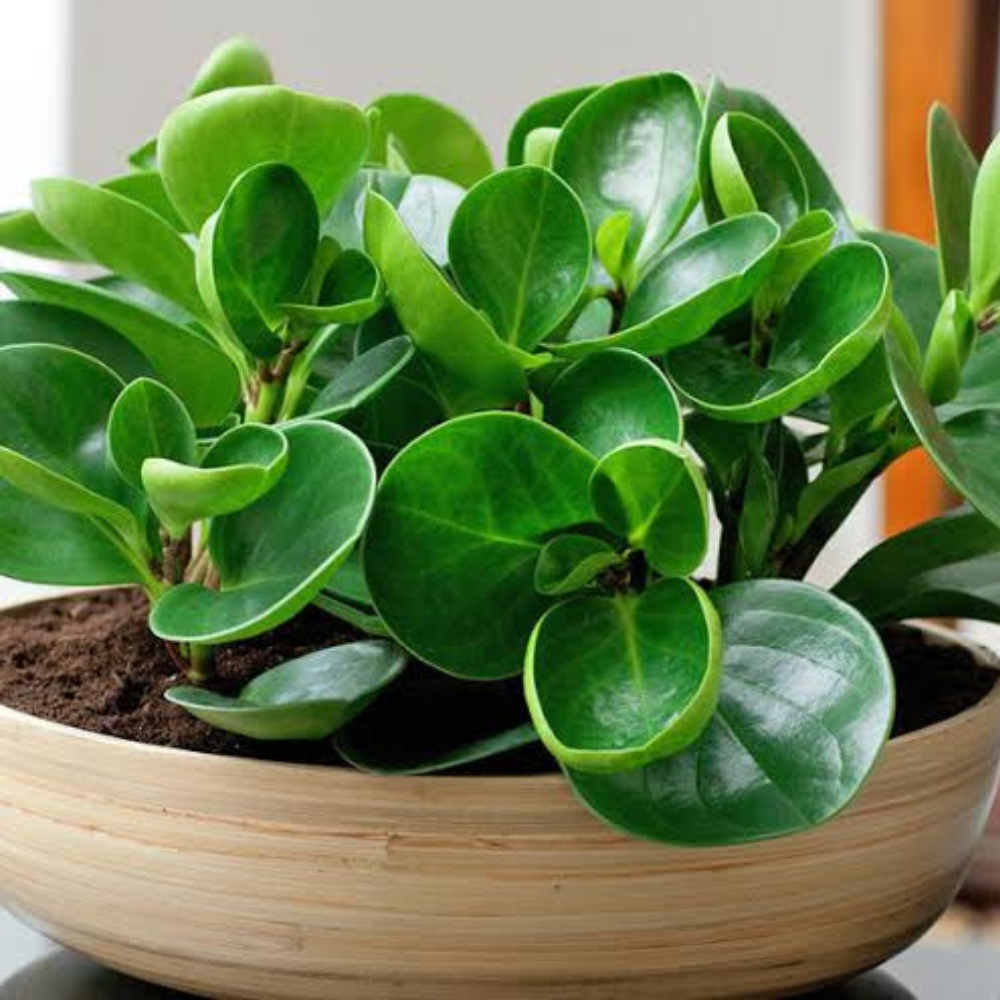
19. Split Leaf Philodendron
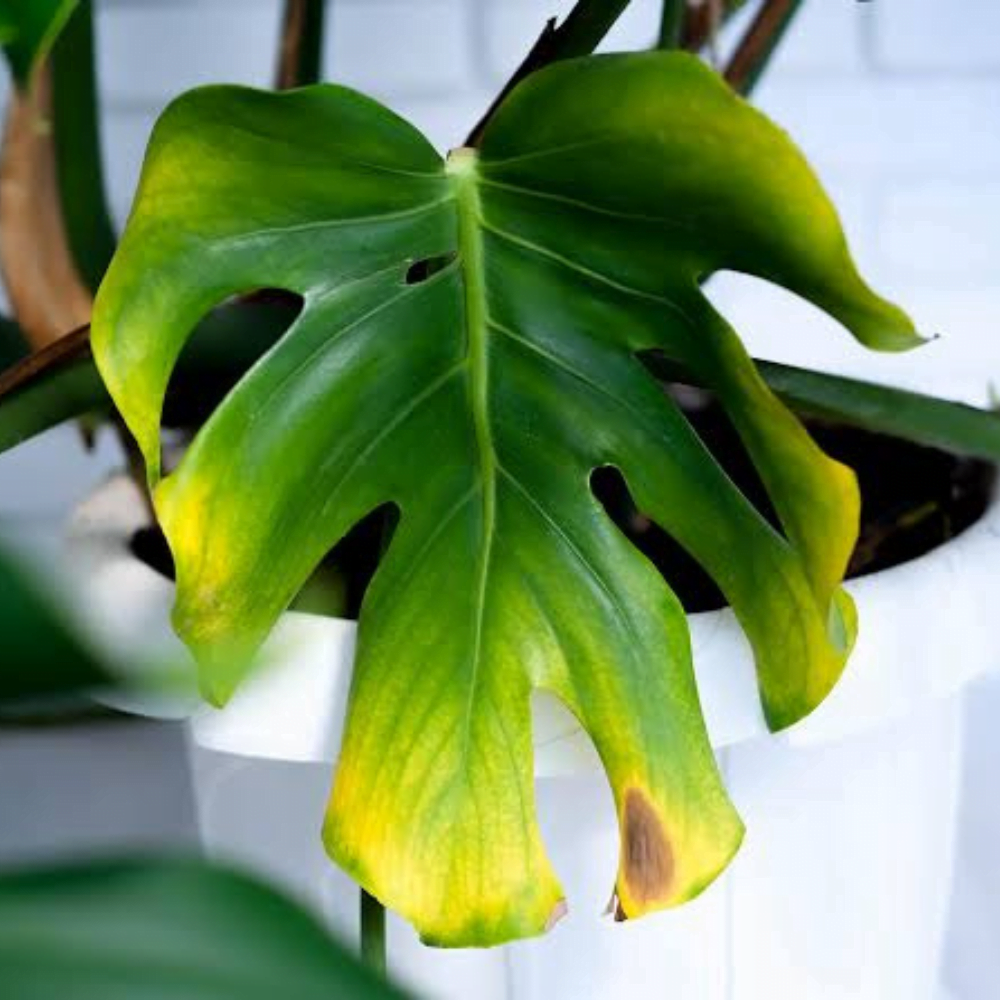
This is yet another of those plants with a deceptive common name, albeit no one is to blame! Biologists have just recently been able to map DNA sequences in specific plants and build new taxonomies.
We now know that the Split Leaf Philodendron isn’t even a Philodendron! It is now placed in its own genus, Thaumatophyllum, which translates approximately as “Wonder Leaf.”
20. Hibiscus
Want to add a pop of color to any room? Bring hibiscus into the mix, and it will not disappoint. It not only has beautiful blossoms, but it also lends a tropical feel to homes and offices.
Many compact types are available in containers. It will grow if you keep it near a window that gets direct sunlight.
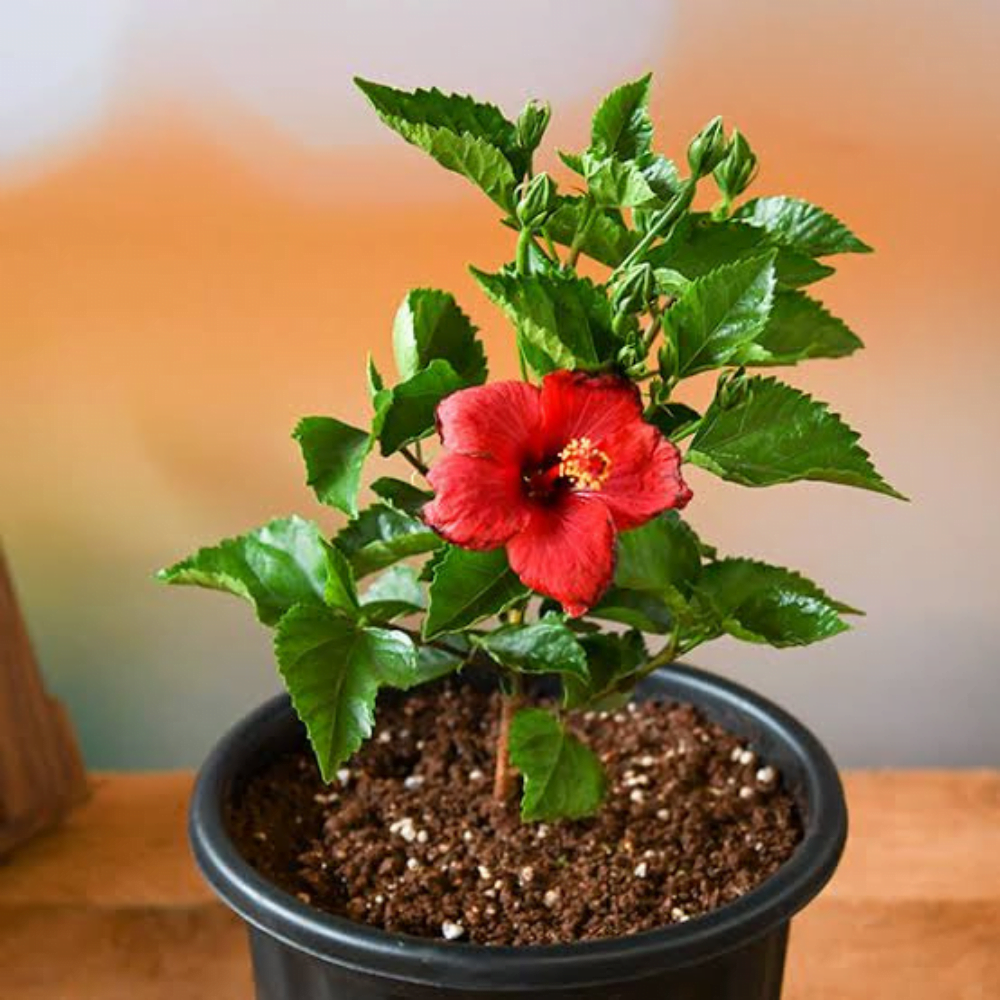
Fast Growing Indoor Plants in India
1. Pothos Plant
Epipremnum aureum (Botanical Name)
Pothos is definitely one of the easiest houseplants to cultivate! The heart-shaped leaves are diversified, with white, yellow, and green splashes. It can be grown in hanging baskets or trained over trellises. It also removes contaminants like formaldehyde, trichloroethene, toluene, xylene, and benzene.
Care instruction of pothos:
- Pothos are very low-maintenance plants. Provide water when the soil feels dry. Provide fertilizer every six to eight weeks with an all-purpose, slow-release fertilizer. Re-pot into fresh potting soil when the previous soil degrades.
- Trim out overgrown roots to hold the plant’s robust and lush look. Occasionally, clean the foliage with a wet cloth. Put the pothos plant in a sink and run lukewarm water over the leaves and limbs.
- Extreme soil moisture can lead to a fungal disease that generates root rot. Shortage of moisture conditions can generate deformed or stunted foliage. Provide moisture deeply when the soil dries out. Do not delay until the soil shrinks out from the edges of the pot — that’s an indication that the soil is too dry.
- If spider mites or other pests become an issue, tap them off with your fingers or wipe them with a wet cloth. Use water or rubbing alcohol. Observe and resume this process regularly until the problem is gone.
2. Asparagus Fern
Asparagus ferns are low-maintenance plants that thrive as houseplants and in shady gardens. Though not technically a fern, the versatile asparagus fern is an attractive herbaceous perennial that is easy to grow.
The soft texture of this plant’s small needle-like leaves is reminiscent of asparagus foliage.
- When planting asparagus ferns outside, choose a spot with dappled shade. Asparagus ferns perform best as potted houseplants when grown in oblique or filtered light.
- Organically rich, well-drained soil is ideal for asparagus ferns.
- Asparagus ferns enjoy warm, humid settings (about 70°F) and cannot tolerate temperatures below 55°F for extended periods.
- Apply a mild liquid fertilizer once a week when the plant is vigorously developing new stems and foliage.
3. Grape Ivy (Cissus alata)
Grape ivy, or Cissus rhombifolia, is a member of the grape family with a shape similar to other ornamental vines with the name “ivy.”
Due to its original habitat in tropical Venezuela, grape ivy grows in a cascading or trailing profusion of vines up to 10 feet (3 m.) long, making it ideal for use as an interior hanging plant.
- These plants do not tolerate temperatures above 80 degrees Fahrenheit (27 degrees Celsius), particularly those in the 90s (32 C.).
- When caring for grape ivy, low light exposure is preferable, yet grape ivy may handle bright to moderate light if kept wet.
- The finest medium for how to care for grape ivy houseplants is a potting combination of peat coupled with particles such as bark, perlite, Styrofoam, and calcined clay.
4. Burn Plant (Aloe vera)
The aloe vera plant is a simple, appealing succulent that makes an excellent indoor plant. Aloe vera plants are also beneficial because the juice from their leaves may be used externally to treat pain from cuts and burns.
How to Maintain an Aloe Vera Plant
- Place in direct, indirect sunlight, or artificial light. A window facing west or south is preferable. Low-light aloes frequently get lanky.
- Temperature: Aloe vera thrives at temperatures ranging from 55 to 80°F (13 to 27°C). Most homes and apartments have optimal temperatures. From May through September, you can leave your plant outside without worry, but bring it in at night if the weather is cold.
- Fertilize sparingly (no more than once a month) and only in the spring and summer, using a balanced houseplant solution diluted at half strength.
- Repotting: Repot when the roots become clogged, as described above in “Planting.”
5. Purple Passion Plant (Gynura aurantiaca)
How to Take Care of a Purple Passion Plant
Follow these steps to care for a Purple Passion Plant. This tutorial will explain how to water a Purple Passion Plant, as well as its light, temperature, and humidity preferences, as well as any additional care it may require to flourish.
- Your purple passion plant prefers indirect light that is moderate to bright.
- Before watering, allow 25% of the soil volume to dry. Avoid getting the leaves wet while watering since the hairs can retain moisture and cause the leaves to become soggy.
- Your purple passion plant prefers a humid atmosphere. However, avoid misting because it dislikes getting water on the leaves. Rather, place a humidifier nearby or make a pebble tray.
- The usual indoor temperature for your purple passion plant is 60-70°F.
- During the spring and summer, fertilize your plant once a month using a half-strength all-purpose liquid fertilizer.
- Purple passion plants are non-toxic to both pets and humans.
6. Silver Squill (Ledebouria socialis)
Silver squill features silvery, lance-shaped leaves with green leopard spots on the underside and silver dots and purple on the top. Teardrop-shaped bulbs appear above the ground on mature plants. During times of drought, silver squill may store moisture in its stems.
Small green flowers on pink stems emerge from the rosette-shaped foliage in the spring.
- The silver squill requires at least three to four hours in direct sunlight per day. It is commonly seen growing in moderately shady, closed evergreen woods.
- Once established, silver squills require little watering because they are drought-tolerant, similar to succulents. In the warmer months, allow the top inch of soil or potting medium to dry before watering. Because the plant will be in dormancy over the winter, water it half as frequently.
- Silver quill grows best in humus-rich, sandy soil, but it will also thrive in rocky soil with a pH between 6 and 8. A well-drained soil is required.
- Interior temperatures are often suitable for growing silver squill as houseplants. When grown outside, the plant thrives in temperatures of 60 degrees or above. Silver squill can resist temperatures as low as 30 degrees Fahrenheit in the winter. Low to moderate humidity is ideal for the plant.
7. Queen’s Tears (Billbergia nutans)
Queen’s tears is a fairly hardy bromeliad that can endure periods of neglect. Their multicolored blooms make them a crowd-charmer and eye-catching addition to any home garden.
Billbergia nutans is one of the easiest bromeliads to cultivate indoors.
Queen’s Tears Care
- In the summer, provide the plant with a temperature range of 65-80oF (18-27oC). The plant requires a temperature of 60-75oF (16-24oC) in the fall, winter, and cooler spring months. During the coldest winters, temperatures can reach 40oF (4oC), however, prolonged exposure will have an impact on the following year’s bloom.
- Provide partial shade to Billbergia nutans during the summer. At other times of the year, the plant requires strong but indirect light to thrive. Flowers can be destroyed by direct sunshine in the summer.
- During the summer, water the leaves, blossoms, and roots frequently to keep them moist but not soggy. Fill any flower cups pointing upward with water and set them aside.
- This plant requires an orchid or bromeliad soil mixture when cultivated as a house plant. This can be achieved by combining one part gardening soil and two parts perlite or tree bark.
8. Turtle Vine (Callisia spp.)
Turtle Vine is a succulent with exquisite, delicate-looking tiny leaves that trail beautifully on their deeper purple stalks. When given ample space, they can grow up to 3m in length and width – and they grow FAST, up to half a metre every year.
Turtle Vine looks magnificent trailing over a statement pot or planter and was an obvious pick for our June Plant of the Month.
Tips for Care
- Turtle Vine prefers bright, indirect light; therefore avoid direct sunlight, especially in the summer. A windowsill facing north or east is great.
- This plant enjoys milder temperatures (between 10 and 20 degrees Celsius) and average humidity.
- The Callisia ‘Turtle’ prefers damp soil. It’s time to add more water when the pot begins to feel light when lifted.
- Turtle Vine has lovely, velvety, downy dark green leaves that grow on lovely dark purple stalks. The flower is tiny and white, and it blooms in late spring/early summer. It also has a fantastic trailing habit and looks stunning in a statement container.
9. Wandering Sailor (Tradescantia zebrina var. zebrina)
There are various variants of the wandering jew plant group. The majority have long vines with 2′′-4′′ oval or heart-shaped leaves.
The color of the leaves varies according to the species and might be pure green, green with a purple stripe, green with a white or yellow stripe, green with pink, purple, and cream splashes, or solid purple.
The back of the leaf may be purple as well. Some wandering jew plants have hairy leaves, while others glisten silver. The wandering jew plant has little white, pink, purple, or magenta flowers.
- Bright light is required for vibrant leaves.
- In the winter, use less water.
- If required, repot in the spring.
- Temperatures below 45°F (7.4°C) should be avoided.
- Use stem cuttings to propagate
- To keep the plant bushy, prune vigorously.
10. Walking Iris (Neomarica spp.)
Walking Iris is a rare home plant, which begs the question of why. This lovely flower has a laid-back personality and will bloom consistently from late winter through early spring (March-April in the Northern Hemisphere).
Even when not in bloom, Neomarica spp. forms a clumping fan of long, strappy leaves, making it a beautiful plant. Those blue-and-white flowers that bloom every year, on the other hand, are breathtakingly magnificent – and pleasantly scented.
- Light: Direct, indirect, or partial sunlight.
- Water liberally throughout the growing season to keep the soil evenly moist.
- Humidity: Room humidity is average (40-50% relative humidity). In the winter, indoor air can get excessively dry, therefore a humidity gauge is an excellent idea. To keep this tropical plant hydrated, use a cool-mist humidifier.
- Average room temperatures range from 60 to 75 degrees Fahrenheit (16 to 24 degrees Celsius). Walking Iris grows well in USDA Zones 9-11. If you choose, you may move your container outside for the summer; just maintain it in full shade.
11. Hoya Carnosa
For good reason, Hoya has been a popular house plant for decades. They have traditional, deep green, vining foliage and fragrant, light pink, and crimson star-shaped flowers that last for years.
Because of their thick waxy foliage, they are frequently referred to as wax plants or porcelain flowers, referring to the peculiar texture of the blossoms. These tropical vining plants have a few conditions to grow, but nothing too difficult.
- Light: Choose a location that receives bright, indirect light. Don’t be fooled by their waxy foliage. They are not succulents and cannot tolerate direct afternoon sunlight. They will grow in low-light conditions, but they are unlikely to blossom.
- Repotting and Soil: Hoya requires well-drained soil with sufficient air circulation. To make the ideal combination, combine equal portions of Espoma’s organic Cactus Mix, Orchid Mix, and Perlite. Hoya prefers to be pot-bound or crowded in their containers. They will only require repotting every two or three years.
- Water: From spring to summer, water regularly with room-temperature water. Allow the soil’s top layer to dry between waterings. Growth naturally slows in the fall and winter, and they use less water. During the fall and winter, water sparingly, just enough to keep the soil from drying out completely. Overwatering can cause flowers to droop.
- Humidity: Hoya is a tropical plant that thrives in moist environments. Use a humidifier to increase humidity levels, especially in the winter when indoor air is dry. As the water evaporates, a saucer filled with gravel and water supplies humidity. Misting the flowers with room-temperature water also helps, but avoid spraying them.
- Temperature: Keep the indoor temperature warm all year, avoiding temperatures below 60 degrees Fahrenheit. It’s also a good idea to keep plants away from cold windows and heating and cooling ducts.
12. Kangaroo Fern
Guess where this fascinating plant comes from. The name alone gives it away. These resilient ferns are from Australia (and portions of New Zealand) and produce an array of dark green leathery fronds that are irregularly formed and vary in size and shape, providing texture to your indoor design.
They are also known as Kangaroo Foot or Paw Ferns.
The Kangaroo Fern houseplant is a rhizomatous plant, which means it will send out thick root-like stems from which new leaf shafts will develop, providing a fascinating mix of shapes and textures and, if left hanging, a lovely trailing habit.
These beautiful Ferns are also quite simple to care for, making them excellent for a variety of living environments, from a highly lighted damp bathroom to a medium-light slightly dryer living room.
Instructions For Care
Follow these steps to keep your Kangaroo Fern happy and healthy.
- When at least 50% of the soil has dried out, water thoroughly. Please do not mist.
- Medium indirect lighting. If displaying outside, keep it in the shade.
- Humidity: Moderate to high humidity is ideal.
- Fertilize once a month in spring/summer with half-diluted Balanced Liquid Fertilizer. In the winter/autumn, do not fertilize.
13. Nerve Plant
The Nerve Plant gets its name from the numerous veins or ‘nerves’ that run across each leaf. The Nerve plant is a terrific gift or starting plant since it is easy to care for and has beautiful color variations.
The Nerve plant is a fantastic communicator in the plant world and may be utilized as the classic “canary in the coal mine” when it comes to knowing when to water all of your houseplants, especially when kept in reduced lighting conditions.
This is due to their natural tendency to droop when thirsty and bounce back after a nice drink, so when it droops, check to see if everyone else is ready for a pool party.
This is an excellent countertop plant for bathrooms or kitchens with high humidity levels. They look beautiful when planted in groups of different colors and also create great splashes of colour in a terrarium.
Instructions For Care
- Water moderately and allow the topsoil to dry somewhat between waterings. During the growing season, inspect the soil of nerve plants more often, and do not let the soil dry out completely. It’s important to maintain the moisture of the soil rather than oversaturate the plant, which generates yellow or limp foliage.
- Light: Bright, indirect light is preferable. In the dim light, the pink coloration will fade. Nerve plants like bright, indirect sunlight from natural light or under artificial lights. If placing it close to a window that will acquire afternoon sunlight, add shear curtains to control leaf burn.
- Humidity: Thrives in high humidity environments; spray as needed. The nerve plant likes humid conditions resembling its native tropical environment. Imitating a moisture setting with humidity trays or sprays when developing the nerve plant as an indoor plant is ideal.
- Fertilize the nerve plant with diluted fertilizer every two weeks when it is actively growing, meaning during growth seasons which is from spring through summer. Nerve plants benefit from a balanced 5-5-5 fertilizer during this season. Do not fertilize nerve plants in the late winter or winter when growth naturally slows down.
- Soil: Nerve plants grow most perfectly in moist soil that drains well, and also in slightly acidic soil. When growing in containers, peat moss at the bottom of the pot or mixed in the soil helps support water draining. If you don’t like to use peat moss, use a combination of equal parts potting mix, humus, and coarse sand.
14. Dainty Crassula
Dainty Crassula, as a succulent, prefers dry conditions, making them ideal for individuals who are short on time but want a pop of leafy greens to rest amongst. And because it grows quickly, you may plant a trail in a pot and have a full-fledged plant before you realize it. What’s not to love about this?
An indigenous ground cover that is quickly becoming a home plant favorite because of its amazing “ticks all the boxes” characteristics.
Spathulata refers to Dainty’s spherical, “spatula”-like leaves that grow in abundance along its numerous branches. When grown in a pot as a houseplant, the foliage will ultimately cascade over the sides, creating a lovely waterfall of foliage.
Instructions for Care
Follow these steps to keep your Dainty Crassula happy and healthy.
- Water thoroughly, then allow the top 4-5cms to dry before watering again. Winter irrigation should be reduced.
- Light: Tolerates both high-light and full-sun situations, as well as medium-light areas.
- Humidity: Humidity on average
- Feed every two weeks during the spring and summer months.
15. Weeping Fig
Consider the Weeping Fig with its delicate leaf and gorgeous grey silver delicate branches if you want a graceful green foliage plant that you may enjoy for years to come.
The Weeping fig is a popular houseplant that, if properly maintained, can grow into a big tree. It prefers humidity and bright filtered light and dislikes being moved or experiencing unexpected temperature and light changes.
If you move your Ficus Benjamina, it may drop its leaves, but they will usually regenerate.
Pair this beauty with a simple planter that will call emphasis to the amazing foliage of this elegant houseplant and set it in a bright filtered light position, such as on a tabletop to generate extra height or in a position where it will not be caught by a draught.
Wherever you decide to put your Weeping fig, whether at work or home, know that it will be hard at work not just looking nice but also cleaning your air as they are amazing air purifiers that remove high quantities of household contaminants from the air.
Instructions for Care
To maintain your Weeping Fig healthy and happy, follow these guidelines.
- Before watering, allow the top 25% of the soil to dry out. Maintain a consistent watering regimen.
- Light: There is a lot of very bright indirect light. Keep away from direct sunlight.
- Humidity: Average humidity is fine, however frequent misting can help.
- Fertilize your tree once a month in the spring and summer using diluted liquid fertilizer.
16. Broadleaf Lady Palm
The Broadleaf Lady Palm is a magnificent specimen with a glamorous aura and a deep green and lush jungle appearance. They have lovely palmate leaves that fan out to create a complete and striking picture.
This hardy Palm has adapted well to indoor living and grows well in any regular home or office environment. The Broadleaf Lady Palm is a well-known houseplant that has been grown as an indoor specimen for over 500 years.
They are not only visually appealing but they are also known to purify the air of common household contaminants, placing them high on the list of effective air purifiers and all-around must-have indoor plants.
The Broadleaf Lady Palm houseplant grows huge, so find a location where it will not dominate. It is a slow-growing palm, so it will not overtake a space too rapidly.
To allow your palm to thrive, provide it with bright light, regular watering, and feeding. They can tolerate regular room humidity but prefer high-humidity regions to thrive.
Instructions for Care
To maintain your Broadleaf Lady Palm happily and healthy, follow these steps.
- Water: During the hot months, this palm prefers to be lightly damp, but avoids leaving the soil soggy or allowing it to stand in water. Allow to dry out during the winter.
- Bright light To keep this palm happy, indirect light is required.
- Dampness: This plant prefers humidity but can endure dry air if the margins are crisp. Check that the palm is not exposed to a cool breeze and place it on a pebble tray to promote moisture in the air.
- Fertilize regularly from spring through October with a balanced liquid fertilizer.
17. String of Hearts
String of Hearts, so named for the leathery, pale-white, and magenta-colored foliage that adorns its cascading branches, will make you fall in love.
While it may appear fragile and dainty, Ceropegia woodii is actually quite resilient and forgiving. Allow the soil to dry between waterings and position it in bright indirect light.
You’ll soon appreciate the lovely black-white-purple fuzzy blossoms that follow the foliage as it trails down from a shelf or winds around a trellis.
A classic houseplant that should be in everyone’s collection. It’s no surprise that the String of Hearts home plants are also known as the sweetheart vine, the chain of hearts, and the rosary vine.
Instructions for Care
Follow these steps to keep your String of Hearts happy and healthy.
- Allow at least half of the soil to dry between waterings. Do not allow the plant to sit in wet soil. Because the plant is dormant in the winter, water it sparingly.
- Light: This plant prefers bright light with a hint of soft sunlight.
- Average humidity is appropriate.
- Fertilize once a month in spring and summer using a half-diluted balanced fertilizer.
18. Pepper Face
Pepper Face Plant, commonly known as Baby Rubber Plant or American Rubber Plant, is a compact upright growing Peperomia with cupped leathery leaves. The Pepper Face Plant appears to be a rubber plant at first glance, hence its common name.
- The Pepper Face Plant (Peperomia obtusifolia) thrives in bright light away from direct sunlight, but it may also survive medium to low indirect light. It can also grow under a grow lamp when natural light is insufficient.
- During the growing season, water the Pepper Face Plant (Peperomia obtusifolia) liberally and allow the soil to dry between waterings.
- A temperature range of 18-250 degrees Celsius is optimal for your Pepper Face Plant. These plants thrive in temperatures that are suitable for you. Temperatures outside of this range have a deleterious impact on plant growth.
- Your Pepper Face Plant will thrive with average room humidity. It does not require significant humidity.
19. Split Leaf Philodendron
Furthermore, they require little care, only needing water when the soil is nearly dry, and can thrive in a variety of situations, including a sheltered patio or balcony.
Although you can arrange them as furniture-sized plants in your living room or as imposing figures in your company boardroom. With these excellent characteristics, they are simple to care for and ideal for any plant novice.
As a result, Selloums make excellent “filler plants,” providing inconspicuous green backdrops for other home plants that require more attention.
But don’t overlook the Split Leaf’s potential to impress on its own. Pot it up beautifully, add some height (shelf, plinth, large coffee table), and you’ve got yourself a stunner.
These lovely fillers are popular for a reason (not just a season): they’re simple, all green, and pretty quick to develop, and they’re an “instant Urban Jungle switch.”
Instructions For Care
Follow these steps to maintain your Split Leaf Philodendron happy and healthy.
- Watering: Keep the soil wet but not saturated. Keep the soil just damp over the winter.
- Light: Prefers strong, indirect light but may handle mild levels.
- Humidity: The Split Leaf Philodendron prefers to be misted regularly.
- Fertilize: In the spring and summer, feed the plant monthly with diluted fertilizer.
20. Hibiscus
Hibiscus is a simple way to bring a tropical flair to your yard. You will be rewarded with many years of beautiful flowers if you know how to care for hibiscus plants. Let’s take a look at some hibiscus care suggestions.
Every gardener should be aware of the following Hibiscus care secrets:
- Soak the soil for 24 hours before planting Hibiscus Bulbs, so it is evenly moist but not soggy. Plant Hibiscus bulbs 3 inches deep in a hole 2 inches deep in the soil.
- Place orange wedges around the bottom of the plant to keep soil-digging pests like squirrels at bay.
- Planting Hibiscus in clay pots will gradually render the soil alkaline by distributing minute particles. Use pots that have at least four drainage holes on the bottom.
- Hibiscus grows in any soil, however, it prefers well-drained soil.
- The use of chemical fertilizers is prohibited.
- If you intend to use commercial fertilizers, choose those that are high in potassium and low in phosphorus. Hibiscus are killed by high phosphorus levels.
- Remove the plant’s trunk gently from its roots by dislodging the soil from the container’s sides.
Conclusion
If you want to expand your houseplants quickly, the solution is to choose a pot that is one size larger than the plant’s root ball. Because plants typically grow roots before top growth, having a larger pot will allow the plant to grow faster.
However, avoid using a huge container because the plant will spend a lot of time establishing roots.
Related Articles
- 15 Best Plants for Front Door Entrance India | Auspicious plants for front door
- 10+ Money plant Benefits That Will Make you Keep It In Your House
- Are Spider Plants Toxic to Cats?- 4 Ways To Prevent Your Cats From Eating Spider Plants.
- Best Plants for the House – 8 Top Apartment Plants That You Can’t Miss
- How to Braid Your Snake Plant: Tips and Care Guide
- 20+ Rare and Unusual Peace Lily Varieties You’ll Love





